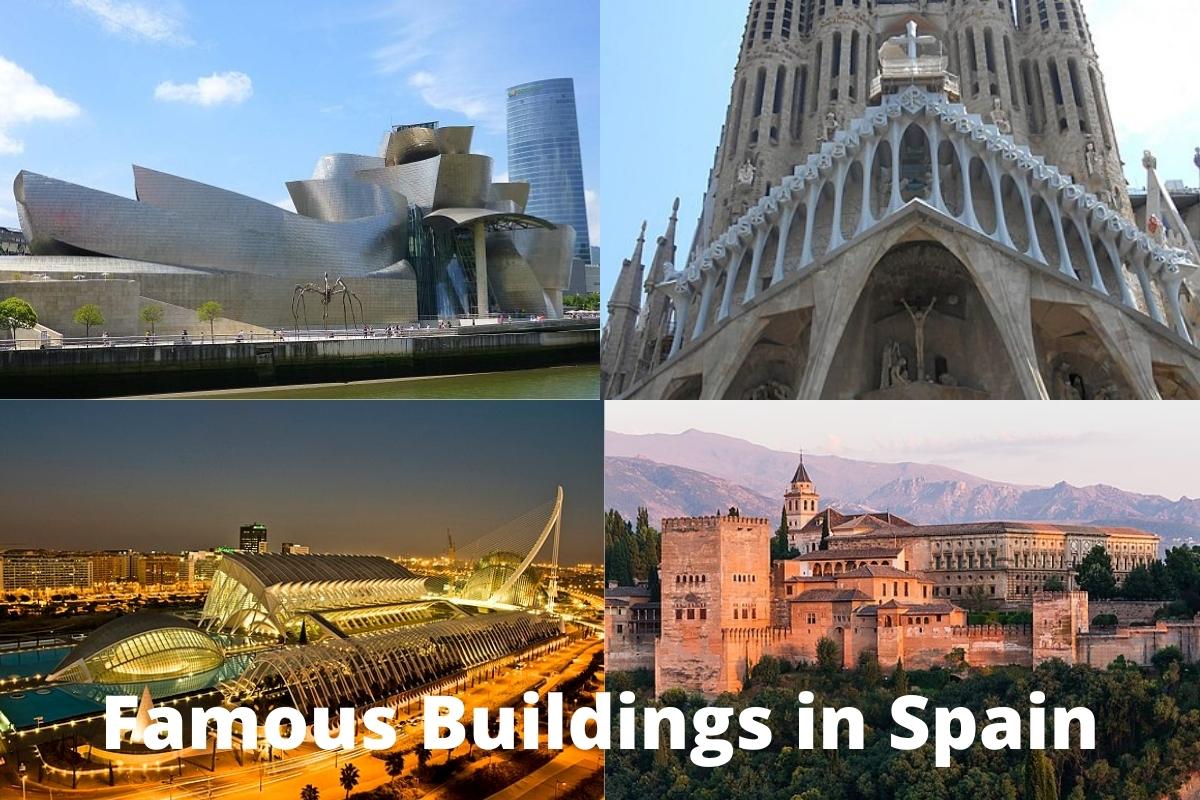Spain is one of the most culturally distinct countries in the world. Every part of life in Spain is uniquely different from the other countries in Europe, as well as the rest of the world.
The artwork, music and even the cuisine found in authentic Spanish restaurants have their own flair, including the architecture of the county’s major cities.
In this article, we will examine 10 of the most famous buildings in Spain and the architects who designed them, as well as their history.
Famous Buildings in Spain
1. Sagrada Familia
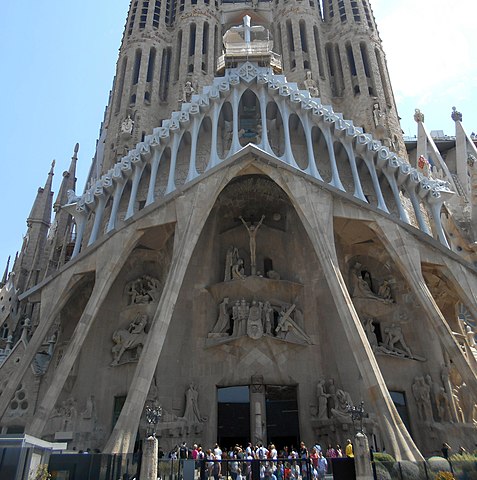
One of the most famous religious buildings in Spain is also one that is considered the most ornate chapel in Europe. It is located in Barcelona and is one of the Catholic church’s most-visited cathedrals in the country.
Although it was designed by widely-acclaimed architect, Antoni Gaudí, in the mid-19th century, the Sagrada Familia is a project that is still under construction today.
Construction began on the chapel in 1882 and it would take many decades for the high-reaching towers to be completed.
Also Read: Famous Buildings in Barcelona
Gaudí was one of the most famous architects who worked in the Gothic or Art Nouveau style and the Sagrada Familia is viewed as the crowning achievement of his career. It’s one of the larger basilicas in Spain, with a capacity to hold up to 9,000 visitors at a time.
The Sagrada Familia is also one of the tallest religious buildings in Spain as the spires measure more than 560 feet, according to the construction plans for the unfinished structure.
Architects and builders who are currently working on the Sagrada Familia hope to finish the massive basilica by 2026.
2. Alhambra
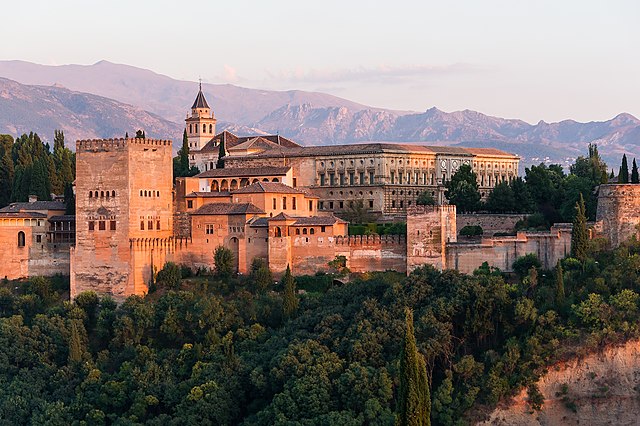
Much of Spain is filled with buildings and other structures that serve as historical evidence that it was once ruled by Islamic empires during the centuries following the medieval period. One of the most well-known buildings that exemplifies this fact is known as the Alhambra, which translates to “The Red One.”
The Alhambra was initially constructed to serve as a massive palace and military fortress in the 13th century under the Nasrid dynasty and the founder of the Emirate of Granada.
It is believed to have been built on the site of an earlier ruler, Samuel ibn Naghrillah, in the 11th century. Construction began on the Alhambra in 1238 and various leaders have made additions or alterations to its walls since that time.
Surrounded by the rugged Sierra Nevada mountains, the Alhambra is situated on an outcropping known as Sabika hill.
It is now one of the most famous tourist destinations for those visiting southern Spain and stands as a tourist attraction and museum for Spanish history under the Moorish cultures that ruled Andalusia during the centuries following the medieval period.
3. Cathedral of Santiago de Compostela
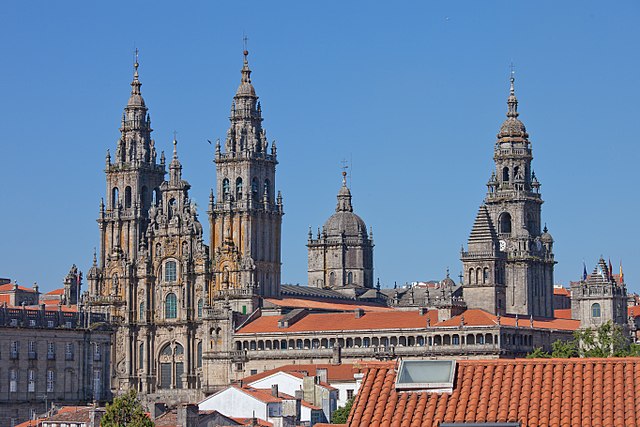
Another one of the Catholic Church’s most famous buildings in Spain and one that is also a major tourist attraction is known as Cathedral of Santiago de Compostela.
This moderately-small cathedral is not as large as some of the sprawling mega-structures that are found throughout Spain’s largest cities, but its architectural style is what garners the attention of those visiting the district of Santiago de Compostela, which is located near the coast in northwestern Spain.
The beautiful cathedral is said to be the burial site of Saint James, who was one of the 12 disciples of Jesus and is said to have traveled to the far reaches of the Roman Empire during the first century A.D., according to historians.
The Cathedral of Santiago de Compostela sits in the city of Galicia and is one of the only few buildings in the world that is built over the burial site of one of Christ’s Apostles.
The building’s front features an incredibly ornate facade of arches, towers and exquisite stone relief sculptures done by some of the most well-known artists in history.
The church is somewhat smaller than many other massive cathedrals in Italy or France, but the intricate detail on the building’s interior and exterior make it a worthy addition to our list of the most famous buildings in Spain.
4. Mosque-Cathedral of Córdoba
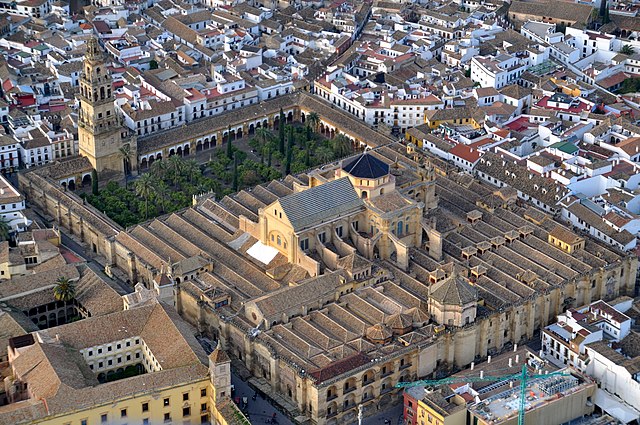
The Mosque-Cathedral of Córdoba is another piece of Spain’s illustrious history and is also evidence that the Islamic faith was once dominant in the region under the rule of Abd ar-Rahman I.
This large structure was built in the 8th and 9th centuries and construction is believed to have started in 785 A.D. under ar-Rahman I, but it was modified and added on to in the centuries that followed.
According to historical records, the Mosque-Cathedral of Córdoba was built on top of what was once a Visigothic structure that was created as a Christian church some time in the 4th century.
The Mosque-Cathedral of Córdoba is a very large, sprawling structure with an inner courtyard, but its interior is even more striking and beautiful. The interior section which was initially meant to serve as a mosque includes columns and double-tiered arches that form a massive open worship area.
The many different expansions done to the Mosque-Cathedral of Córdoba are evidence of the long-standing rule of the Islamic empire during the centuries before the medieval period.
It is considered to be one of the most historically-rich buildings in Spain and is estimated to have at least 2 million visitors each year.
5. Guggenheim Museum Bilbao
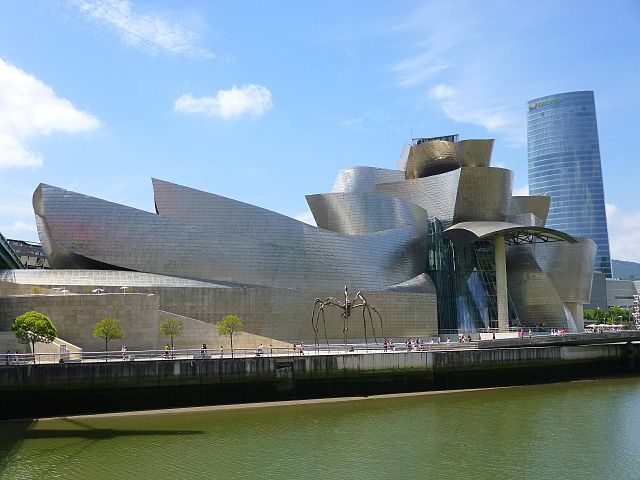
Among the many ancient structures that are listed as the most famous structures in Spain, the Guggenheim Museum Bilbao is recognized as one of the most incredible modern buildings in existence.
This building was designed by the celebrated architect Frank Gehry, who is viewed by many as one of the most accomplished designers and architects in the modern era.
The Guggenheim Museum Bilbao stands along the Nervión Estuary in Bilbao and is one of several stunning buildings that stand as museums belonging to the Solomon R. Guggenheim Foundation.
Unlike many other modern structures built with a modern design, the Guggenheim Museum Bilbao is a building that “one of those rare moments when critics, academics, and the general public were all completely united about something”, according to Paul Goldberger, a well-known architectural critic.
The building’s stunning exterior consists of many different layers that are intertwined with a metallic lining, which makes the Guggenheim Museum Bilbao appear to be a futuristic structure that would otherwise seem out of place were it not for the expert architectural taste of other nearby structures.
6. Alcázar of Segovia
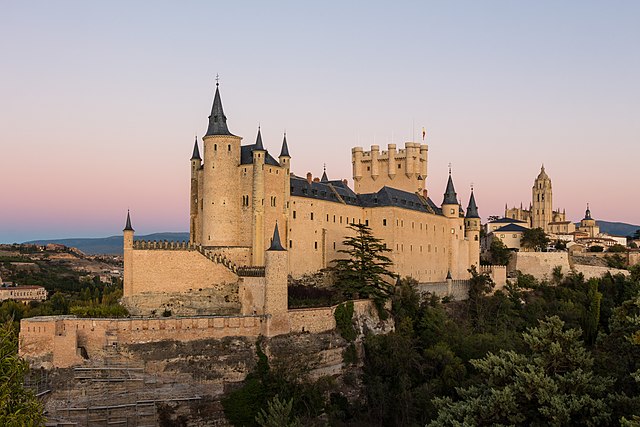
The hills and mountains across Spain and other parts of Europe are often dotted with various ancient castles and fortresses that date back to the middle ages in some cases.
These structures are brimming with history and often reflect the changing-of-the-guard which Spain has experienced over the course of the last several centuries in regards to the type of rulers that have occupied the land.
The Alcázar of Segovia is one of the most visited destinations in northern Spain and sits on a rock surface that is nestled between the Eresma and the Duero rivers.
Unlike other structures built in the Iberian Peninsula, this building is an alcázar, which means that it was specifically built to serve as a home to a prominent ruler or governmental figure. The Alcázar of Segovia is one that was built under the Almoravid dynasty during the 11th or 12th centuries, according to historians.
Due to the land it is built on, the Alcázar of Segovia has the distinct appearance of a ship’s bow jutting out of the sea. Over the centuries since it was constructed, it has served as a prison, king’s palace, military fortress and a Royal Artillery College and military academy.
7. Plaza de España
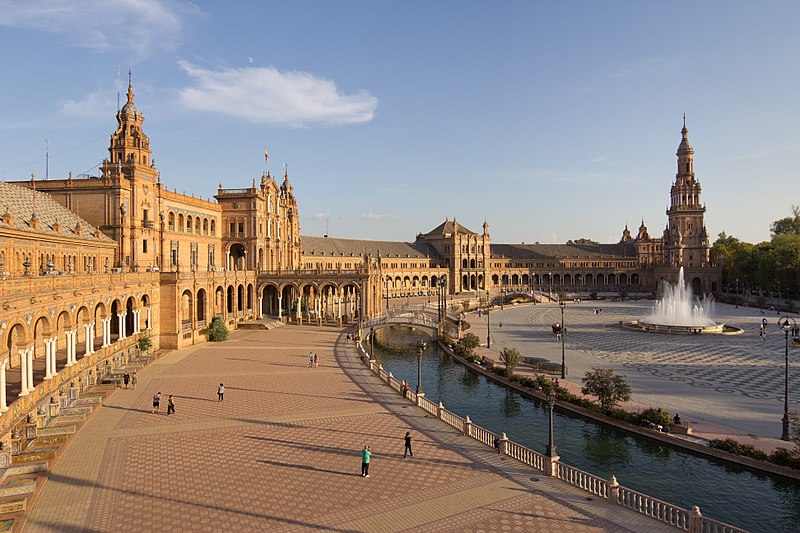
There are various open courtyards and plazas across Spain that have been given the name, Plaza of Spain, but only Seville’s Plaza de España has earned the distinction of being one of the country’s most famous architectural buildings. The massive structure sits in southern Seville in the Parque de María Luisa.
It was constructed in 1928 for the Ibero-American Exposition of 1929, which was a widely-celebrated fair that was held each year in Spain during the early 20th century.
The Plaza de España was designed and constructed by famed Spanish architect, Aníbal González, who designed many other prominent buildings throughout Spain and other parts of Europe during his career in the early 20th century.
Today, it stands as one of the most visited attractions for anyone visiting the city of Seville and has been featured in many paintings, photographs, films and other works over the decades since it was built.
8. Ciutat de les Arts i les Ciencies
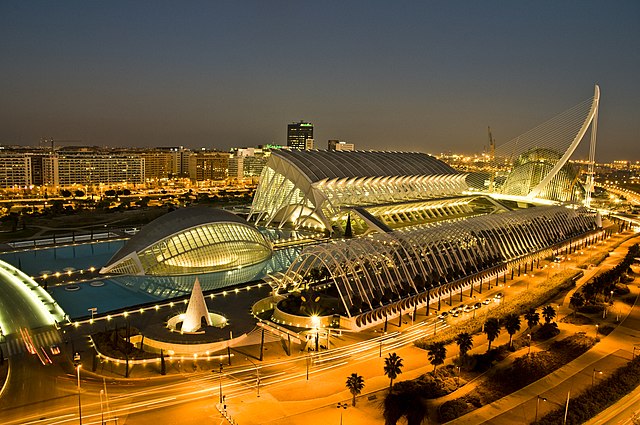
Valencia, Spain is recognized as one of the most architecturally beautiful cities in Europe and many are drawn to its exquisite structures as vast sections of the metropolitan area are considered to be a work of art.
The Ciutat de les Arts i les Ciencies is arguably one of the most impressive modern works of architecture in the world.
Designed by Santiago Calatrava and Félix Candela, the Ciutat de les Arts i les Ciencies translates to “The City of Arts and Sciences” in English and is considered to be one of the 12 Treasures of Spain by local media within the country.
The structure features a massive structure known as L’Hemisfèric which serves as a planetarium and IMAX Cinema, as well as a laserium where laser shows are on display for visitors. This is just one of the eight massive structures within the ‘city.’
The sprawling structure was created in the 1990’s and it officially opened in 1998. Architects continue to develop parts of this project and various other attractions are planned to be completed in the coming years.
9. Royal Palace of Madrid
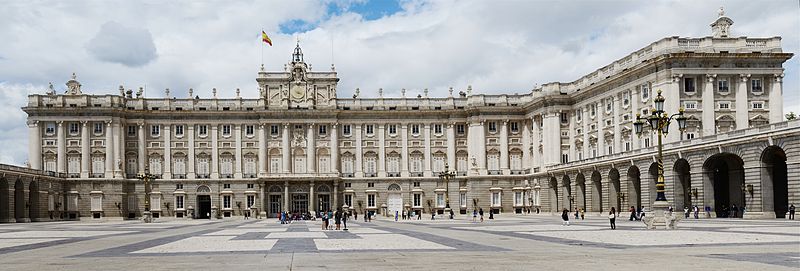
Madrid is a city that’s known for its numerous lavishly-decorated and designed buildings. Among the most impressive of these is the Royal Palace of Madrid.
This building serves as the home of the official royal family of Spain and has done so for centuries since it was built in 1755. It is now mostly used for official state events and ceremonies as the royal family no longer holds power over the country.
The palace itself is a large, expansive building that is nearly 1.5 million square feet and was built initially by Muhammad I of Córdoba in the 9th century as a fortress for his military forces.
It changed hands multiple times over the course of Spain’s history from Christian to Islamic rulers, but it wasn’t until the fortress burned down in 1734 that Spain’s king decided to rebuild the structure as the nation’s official royal palace.
The design of the Royal Palace of Madrid was credited to Filippo Juvarra and Giovanni Battista Sacchetti, both of which were famous architects in Spain during the early 18th century.
These two designers worked alongside other masterful builders like Ventura Rodríguez, Martín Sarmiento and Francesco Sabatini. It was built under the guidance of King Felipe V of Spain and construction lasted two decades from 1735 to 1755.
10. Casa Batlló
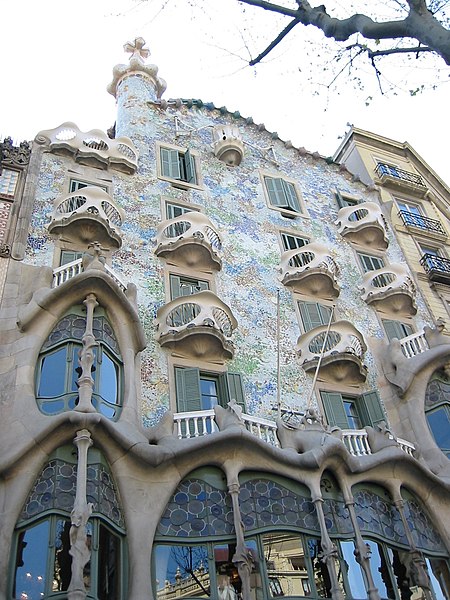
Antoni Gaudí is one of the most highly-revered architects and designers in history, but he is especially celebrated as a native of Spain.
Many of his most prominent works include buildings that are viewed as some of the most well-known and masterful works in the entire continent, as well as the rest of the world. One of Gaudí’s greatest masterpieces of architecture includes a structure known as Casa Batlló.
Built in 1904, this stunningly beautiful building is located in Barcelona and was done in a style that critics point to as characteristic of Gaudí and his handiwork.
Also Read: Famous Landmarks in Barcelona
The building is located in an upscale district of the city and features eye-catching designs and many Art Nouveau and Modernist elements. These include many incongruent windows and other parts that would otherwise be designed in a linear fashion under other styles.
Gaudí included a facade of colorful mosaic designs, an arched roof that forms a detailed sculpture of a dragon, and an exterior that is incredibly detailed.

